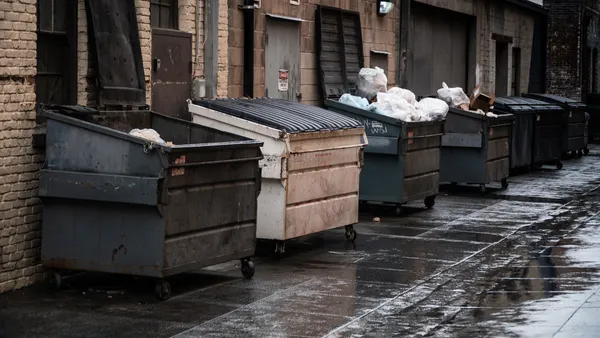Dive Brief:
- The number of recorded waste industry-related fatalities rose 18% to 132 during 2017, according to data compiled by the Solid Waste Association of North America (SWANA). This number included 38 workers and 94 members of the public, "with almost all incidents occurring in the United States."
- Of these 38 workers, 23 died on collection routes, eight at landfills, two at material recovery facilities, two at transfer stations and three in other situations. Many of these workers were employed by smaller private companies.
- Among the 94 public fatalities, 57 were in vehicles, 23 were pedestrians, eight were on bicycles, four were on motorcycles and two were at disposal facilities.
Dive Insight:
The annual Bureau of Labor Statistics report is historically the most commonly cited source, but that data lags by a year, so 2017 figures won't be published until December. The BLS data also doesn't track temporary workers (which are included in this total) or members of the public. Due to "disconcerting" trends and the "sheer number of these incidents," SWANA decided to issue its own release ahead of time.
"We think it's important to get this info to the industry sooner," said SWANA CEO David Biderman. "Large companies, smaller haulers and local governments in both the U.S. and Canada need to be paying more attention to safety and risk."
While a direct comparison won't be possible until the BLS releases its own figures, in part because of a handful of Canadian incidents, this preliminary 2017 total does appear higher than the 31 worker fatalities reported for 2016. The rate of fatal incidents did decrease in 2016, but refuse and recyclable material collectors remained the fifth most dangerous occupation in the country.
Figuring out how to improve this trend remains a top priority for groups such as SWANA and the National Waste & Recycling Association, as well as many municipal and private service providers. A number of third-party fatalities are seen as truly random — such as cars crossing into oncoming traffic — while others could potentially be avoided through greater awareness or the use of vehicle technology.
As for the workers, SWANA's analysis shows an array of causes — falling off vehicles, being struck by vehicles, lock-out/tag-out issues — making it hard to find one specific fix. Because collection comprises the highest share of incidents, significant attention has been paid to training and advocacy in that area. Slow Down to Get Around bills advanced in multiple states this spring, with 17 now passed and another expected to get final approval in Maryland.
All of this attention has begun to show results in terms of growing awareness around safety culture, but early data from this year shows the problem is far from solved. According to SWANA, third-party fatalities are occurring at a similar pace in 2018, and 17 industry workers have died so far.















